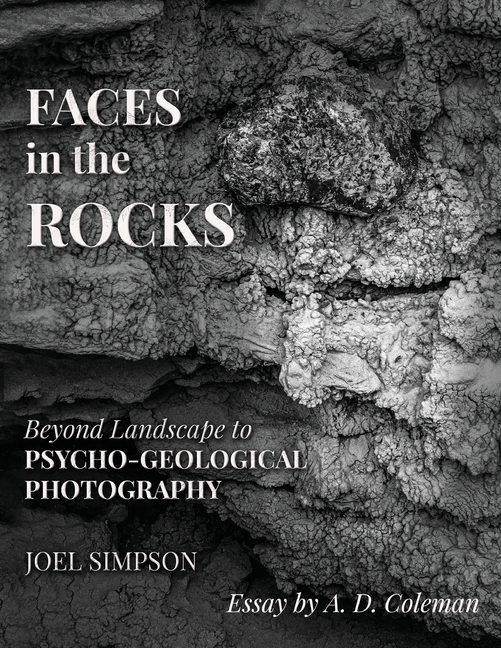Description
Joel Simpson's new book, Faces in the Rocks: Beyond Landscape to Psycho-Geological Photography, presents a generous collection of images that combine the natural world with the mental one, without sacrificing realistic capture. In fact, it is the mineral realism that makes these images so surreal.
Beginning with an exploration of unusual landscapes, including cavescapes, frozen waterfalls, ominous atmospheres, and metaphorical scenes from nature, Simpson prepares the viewer for the deeper explorations that follow. But first he offers a series of aerial images taken from drones, and small and large airplanes. These images of the earth from above reveal landscapes from an aerial perspective (mostly without horizon or sky), which become abstractions (and one figuration) .
The rest of the book features compositions found at close range from around the world, where the subject is less about a particular place (the province of landscapes) than it is about the impact of a powerful abstraction or bizarre figuration.
These chapters on Abstraction and Figuration (at ground level) show that when the photo artist gives access to his unconscious to a plethora of mineral and glacial forms, he can capture utterly original images beyond the limits of his own imagination. Such images tend to be more outlandish, more frightening, more seductive, and more detailed than the vast majority of painted or drawn images, since they result from the collaboration between the unconscious and the apparent "chaos" of rock and ice formations from the natural world. These images bear a strong surrealistic charge, due both to the chaos of their surface textures and to their phantasmagorical content. They reveal the marvelous in nature as well as the strong relationship between the unconscious inner world of dreams and the outer world of the mineral surface of the earth.
The book takes viewer/readers even "farther beyond" landscapes in the following section. Here he turns fisheye-lens captures of the ceilings and walls of caves, grottoes, and a dried mud pond into imaginary heavenly bodies and dystopian future scenes. All images are real mineral surfaces: unique captures, no image-combining and no AI. They are segments of the real world recontextualized by the distorting optics of the 8-mm fisheye lens and a starry-sky background.
The book concludes with a chapter showing how to capture and create such photographs, as well as an appendix that shows scenes and maps of six of the places he visited in order to find the formations.
Product Details
- Apr 24, 2025 Pub Date:
- 1967349827 ISBN-10:
- 9781967349821 ISBN-13:
- English Language




